Recent Articles
Popular Makes
Body Types
2017 Ford Focus vs. 2017 Mazda 3: Which is Best?
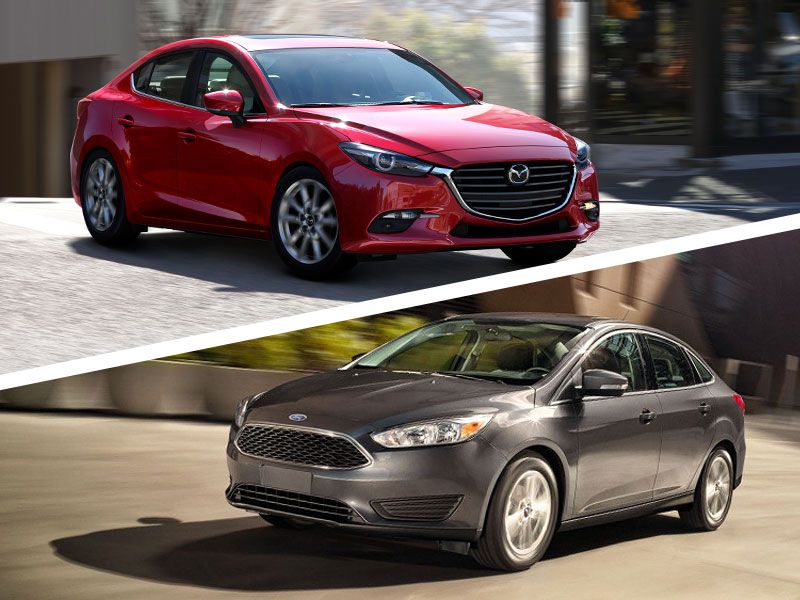
2017 Mazda3 vs 2017 Ford Focus exterior front angle ・ Photo by Mazda / Ford
The Ford Focus and the Mazda Mazda3 are two popular compact cars, but which car is better? To find out, the expert editors at Autobytel have come up with ten categories where the Focus and Mazda3 will face off with each other, and then we’ll tally up the scores at the end to see which car comes out the winner.
We’ll be doing a general comparison of the two models, but when a direct comparison is needed we’ll be using the Mazda 3 Sedan Sport (starting at $17,845) and the Ford Focus SE (with an MSRP of $18,175), both with 2.0-liter four-cylinders, six-speed automatic transmissions and no extra options. Read on to learn what we discovered.
Styling
Styling is subjective, so we’ll try to stick to the features of one car versus another to decide a winner here. In our comparison between the Focus SE and the Mazda3 Sport, the Ford edges the Mazda thanks to its painted aluminum wheels, whereas the Mazda3 has steel wheels with full covers. On the other side, the Mazda has its antenna integrated into the rear window which makes for a more streamlined design than the Focus’ roof-mounted antenna.
Both cars have optional packages that may add or change parts to improve the exterior looks (and there’s always the aftermarket), so we’re calling this one a draw.
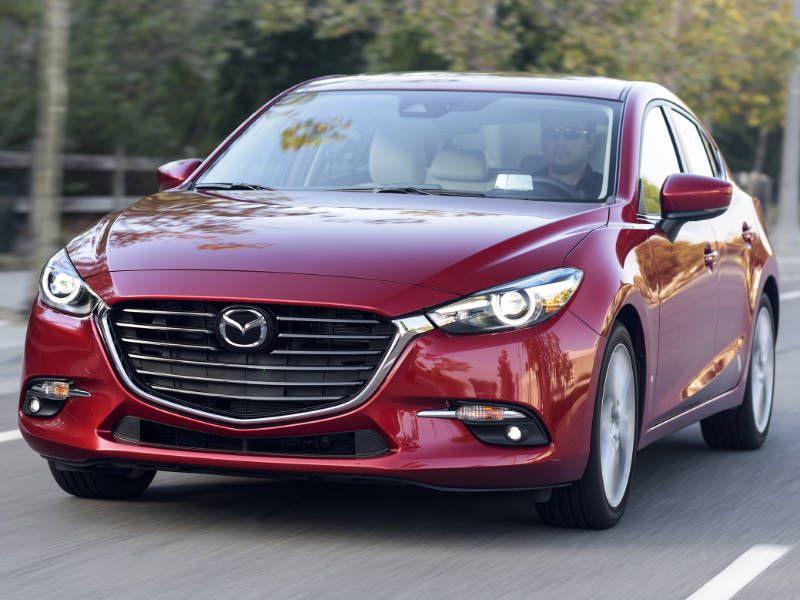
Photo by Mazda
Interior
The Mazda3 has the edge in the interior department mainly due to a fairly simple design and some recent updates that make it nicer than the slightly aged interior in the Focus, which can seem cluttered and a bit complex at first. In addition, some of the Focus’ design elements don’t seem to make the best use of the available space, for example, the dash seems to take up more than its fair share of room.
The Mazda3’s interior materials are nice, though some substandard plastics are in evidence, while the Focus’ materials are consistently average. Both models have a fair amount of interior storage cubbies, and equipment-wise both models are comparable, though the Ford has an extra 12V power outlet in the rear seat.
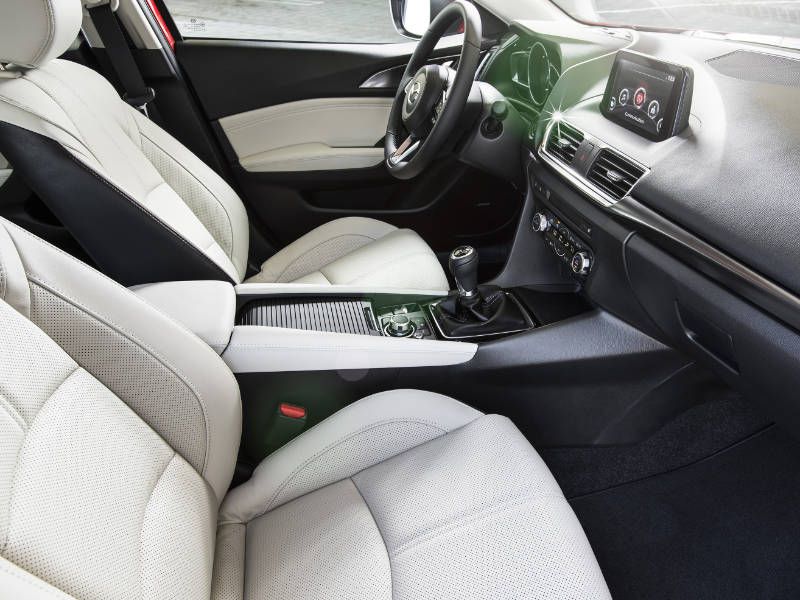
Photo by Mazda
Cabin and Cargo Volume
The Mazda3 has more front headroom (38.6 inches versus 38.3), more shoulder room, more hip room, and more rear legroom (35.8 inches compared to 33.2), and a higher total passenger volume (96.3 cubic feet for the sedan and 96.4 for the hatch.) Despite those numbers, the Focus feels roomier and has just slightly more rear headroom (38 inches versus 37.6), and more front leg room (43.1 inches compared to 42.2).
The Focus also has a bigger trunk at 13.2 cubic feet for the sedan and 23.3 for the hatch (compared to the Mazda3’s 12.4 and 20.2), though those numbers change once the seats are folded down.
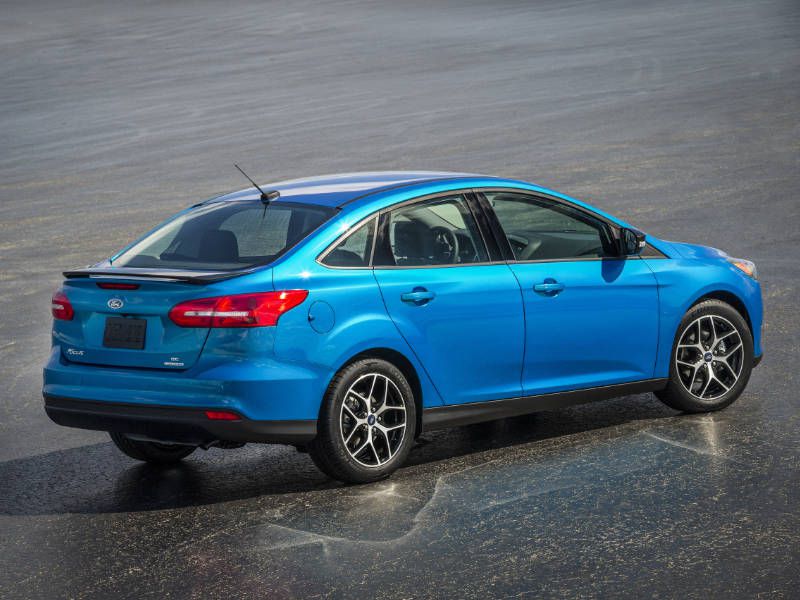
Photo by Ford
Technology
Both of these models are filled with the requisite technology such as remote keyless entry, steering-wheel mounted controls, and stereos with USB inputs and Bluetooth audio streaming. Base models of the Mazda3 get a 7-inch touch screen display, while the Focus only gets a 4.2-inch screen standard.
In addition, the Mazda3 is available with a host of technology that isn’t available on the Focus (including some features that aren't available on any other car in the class,) including Lane Keep Assist, Mazda Radar Cruise Control, Traffic Sign Recognition and the i-ELOOP regenerative braking system. On the flip side, the Focus is available with the MyKey system that helps teach safe driving habits to less experienced family members, but it isn’t enough to steal the win from the Mazda.
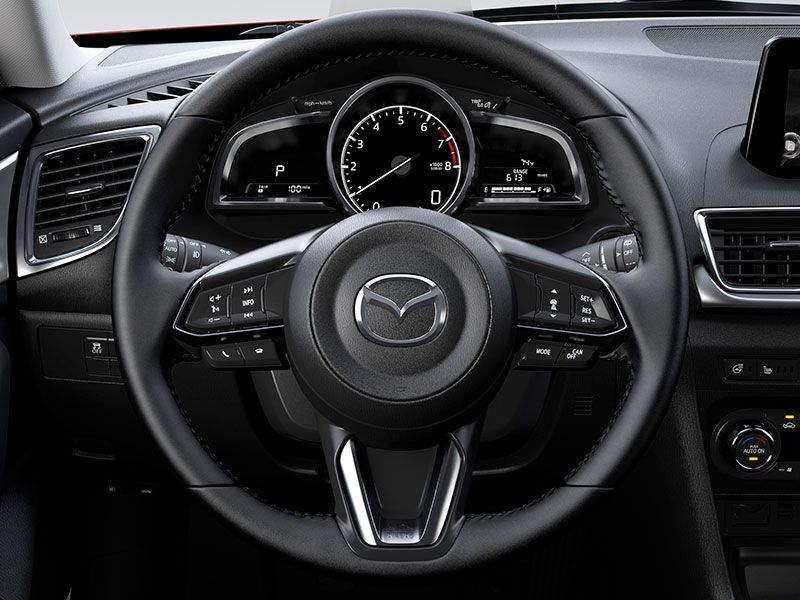
Photo by Mazda
Engine and Transmission
The Mazda3 Sport uses a 2.0-liter four-cylinder SKYACTIV-G engine that generates 155 horsepower, while some trims are available with a 2.5-liter version that puts out 184 horsepower. Both engines seem to punch above their weight, and a six-speed manual or a six-speed automatic transmission is available with either engine.
The Focus SE is equipped with a 2.0-liter four-cylinder that generates 160 horsepower, paired with a six-speed PowerShift automatic transmission. Several other engines are available in the Focus lineup, including a 1.0-liter EcoBoost three-cylinder that generates 123 horsepower, as well as the high-performance turbocharged four-cylinder EcoBoost engines in the ST and RS that make 252 and 300 horsepower respectively. Because of the full range of options, the Ford takes the engine and transmission category.
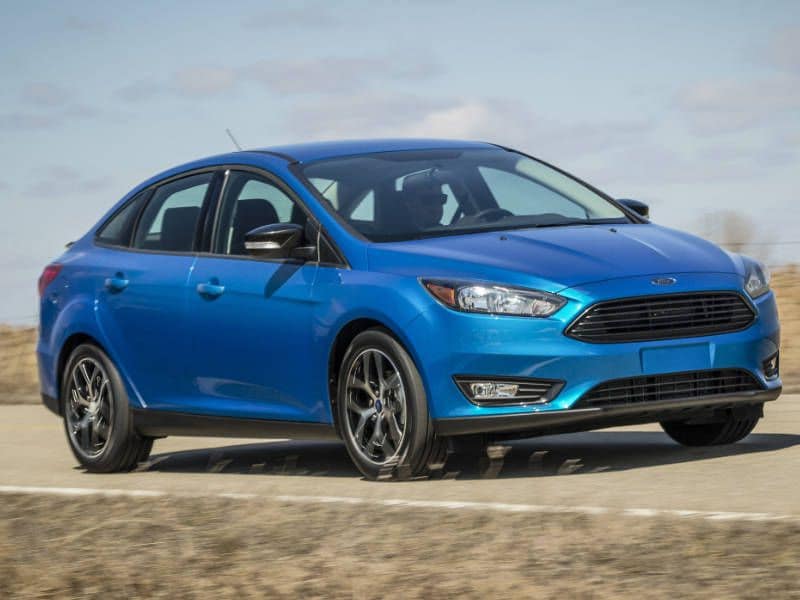
Photo by Ford
Ride and Handling
Both the Focus and the Mazda3 have a firm ride, but the ride in the Focus is just a little bit softer and more controlled. Both rides are acceptable on smooth roads, but the difference is quite noticeable when the road gets bumpier. In the handling department both cars are fun to drive, but the base model Mazda is just a bit better than the base Ford.
Unlike the Mazda3, however, the Focus is also available in the high-performance ST and even higher-performance all-wheel drive RS trims, and they are two of the best handling and fun to drive small cars on the market. Overall we’re going to have to give the ride and handling edge to the Focus because of its slightly better compromise between handling and comfort.
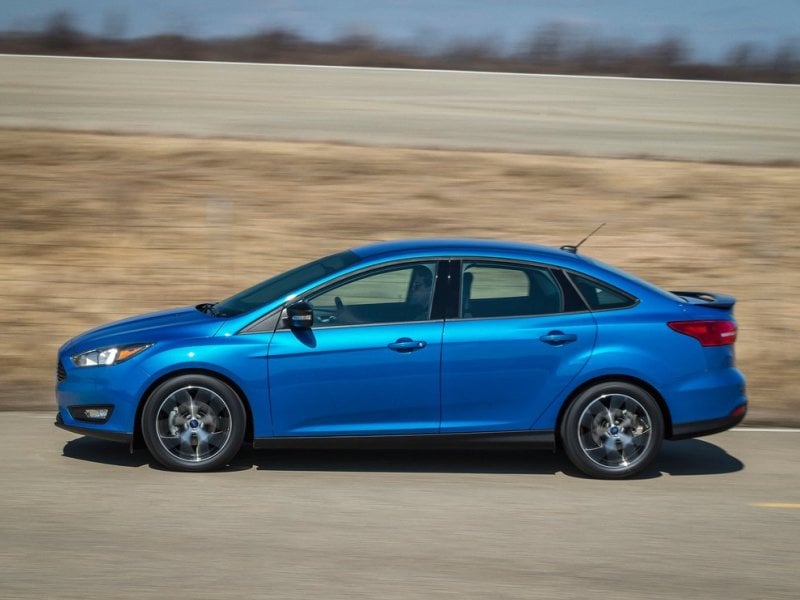
Photo by Ford
Fuel Economy
Even though it’s a bit slow in some situations, if you are concerned with fuel economy above all, the Focus with the 3-cylinder EcoBoost is the way to go with a city rating of 30 miles per gallon and a highway rating of 40 mpg for a combined 34 mpg. If you do a mix of city and highway driving and need an automatic transmission, it’s the Mazda3 Sedan with the 2.0-liter SKYACTIV-G that is the most economical with a rating of 28 mpg city and 37 highway for a combined 32 mpg. Overall it’s the Focus that takes this category, especially if you factor in the electric version that uses no fuel at all (with an MPGe rating of 118 city and 96 highway.)
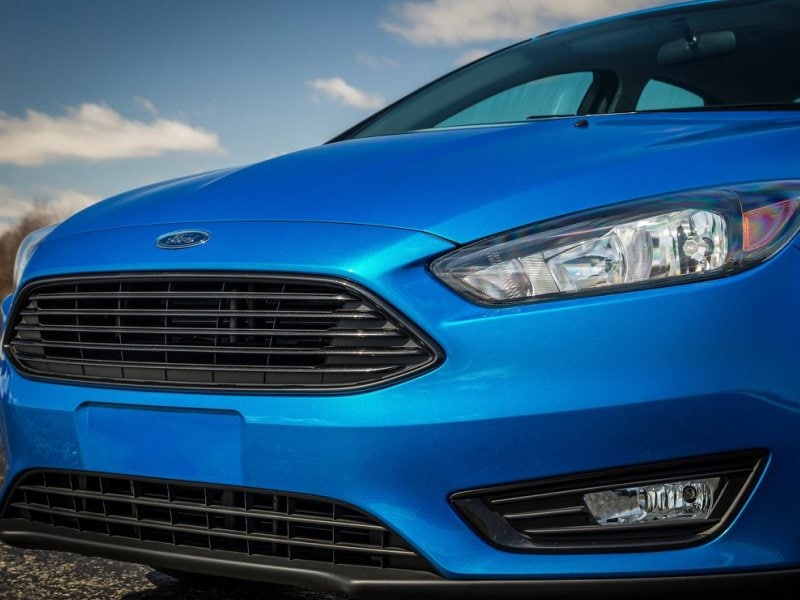
Photo by Ford
Safety
When it comes to crash testing, the Mazda3 just barely outperforms the Focus. Both models receive five stars in all tests by the NHTSA except for the rollover test where they both score four stars. In IIHS testing the Mazda gets a ‘Good’ score in all tests, while the Ford receives a ‘Good’ score in all tests except for the small overlap front test where it only scores ‘Acceptable.’ Thanks to the available i-ACTIVSENSE Safety Package with Lane Departure Warning System, Lane Keep Assist, Mazda Radar Cruise Control and Smart Brake Support, the Mazda also outperforms the Ford on the active safety front, with a Superior rating (with optional equipment) in the IIHS test, earning the Mazda3 a Top Safety Pick+ rating.
Winner: Mazda3
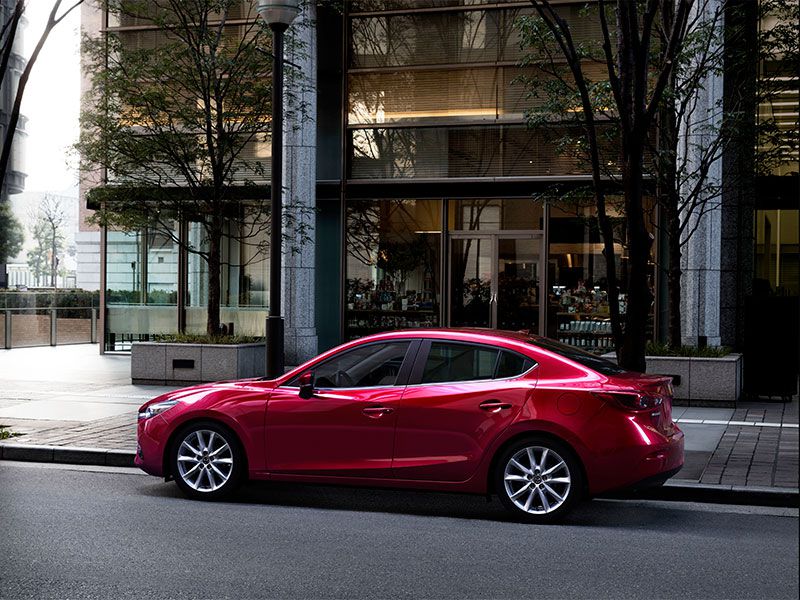
Photo by Mazda
Value
When it comes to value, the compact segment is incredibly tight, and this comparison is no different. The Focus starts at just $16,775 for the stripped down Focus S sedan and runs to just over $26,500 for a fully loaded Titanium hatch. The Mazda3 sedan starts at $17,845 for the Sport trim and can run over the $30,000 mark for a Grand Touring with all the options, though that does include some features that its competitors don’t offer, such as the previously mentioned Lane Keep Assist, Mazda Radar Cruise Control, Traffic Sign Recognition and i-ELOOP regenerative braking system. Still, the Focus is a better value for the money than the Mazda3, especially if you’re simply looking for a car with the basics.
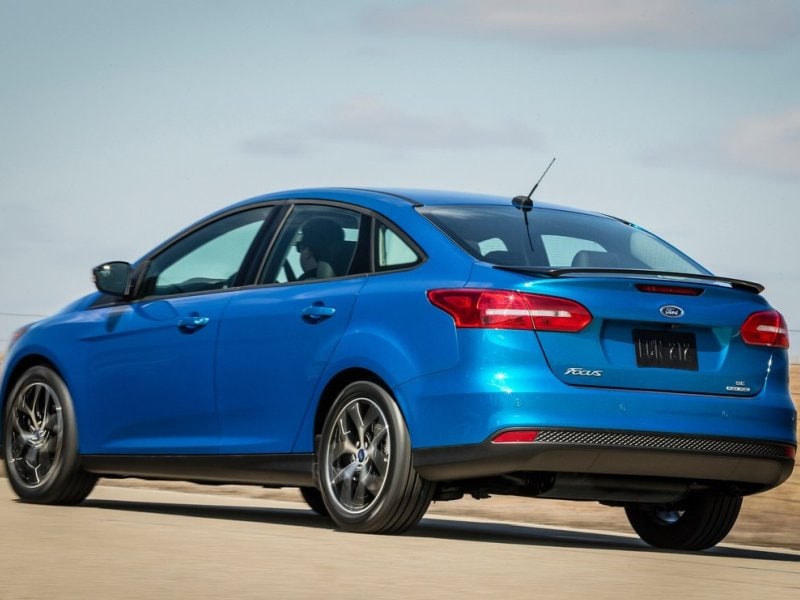
Photo by Ford
The results were close, but at the end of our comparison the wins in each category reveal that the Mazda3 came out ahead in three categories (Interior, Technology, and Safety) while the Focus won in five (Cabin and Cargo Volume, Engine and Transmission, Ride and Handling, Fuel Economy and Value) and there was one draw (Exterior Styling.) That makes the Ford Focus the winner of our comparison, but the Mazda3 is still worth considering. There are other models out there that are also worth taking a look at, including the new Honda Civic and the venerable Volkswagen Golf and Jetta. Don’t take our word as gospel, but instead use it as helpful advice and do your own comparison during your test drives.
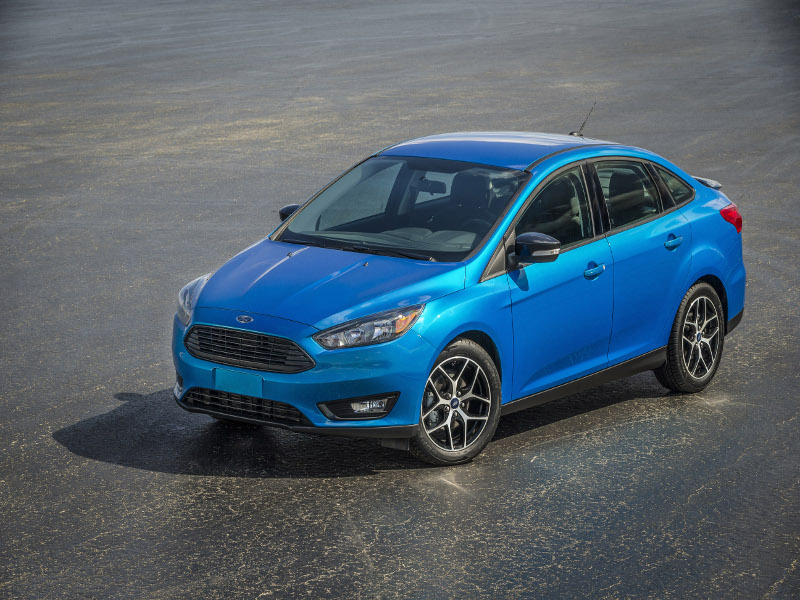
Photo by Ford